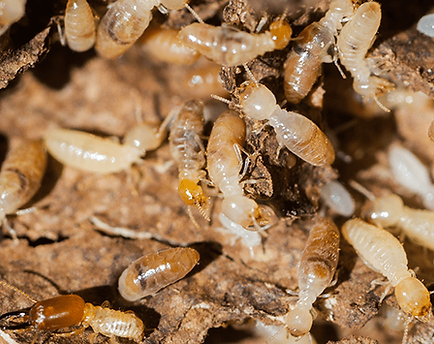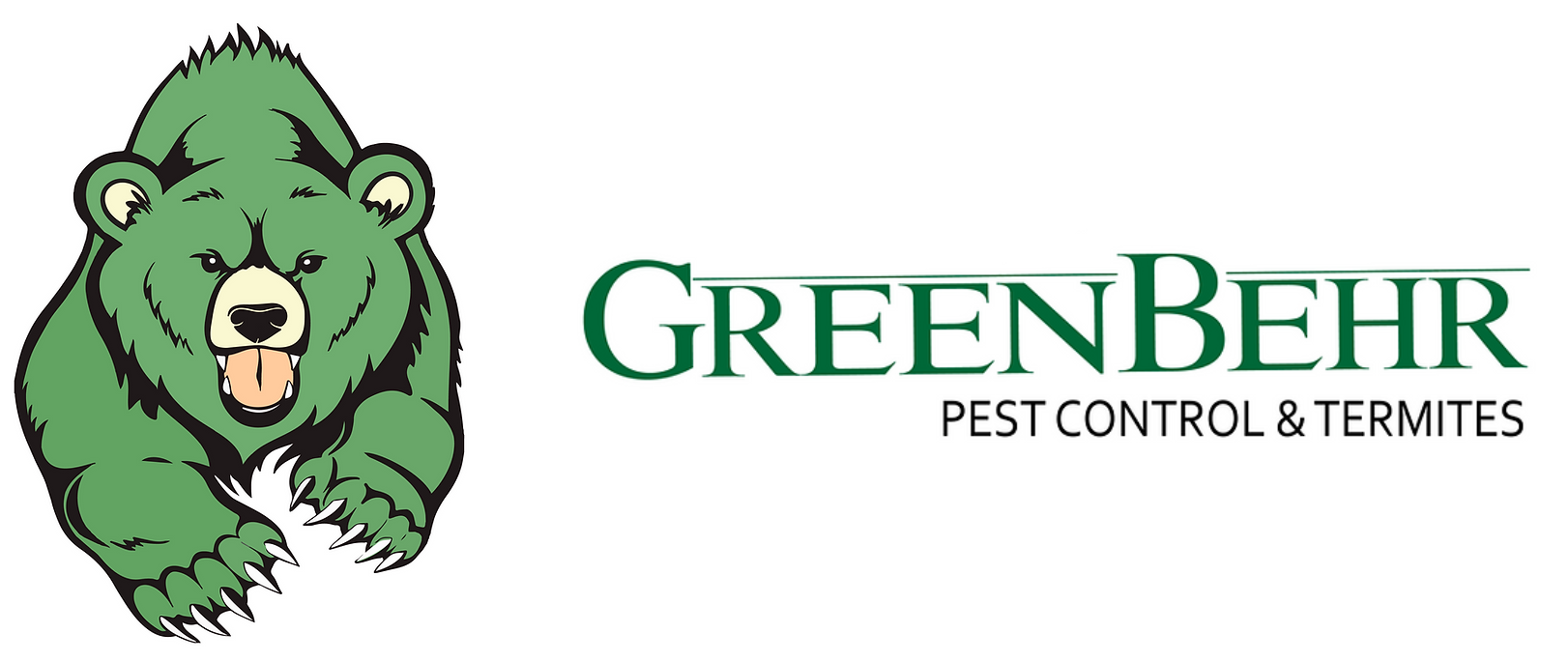
Behavior
Termites are social insects belonging to the order Isoptera. They live in colonies and exhibit complex behaviors that contribute to their success as one of the most significant pests in the world. Here are some key aspects of termite behavior:
- Social Structure: Termites live in colonies with a hierarchical social structure. Each colony consists of different castes, including the king, queen, workers, soldiers, and reproductive individuals.
- Wood-Feeding Behavior: Termites are known for their ability to break down cellulose in wood and plant materials. They feed on cellulose-rich materials, such as wood, paper, and vegetation, making them a significant threat to buildings and structures.
- Construction of Nests: Termites build nests using a combination of soil, saliva, and feces. These nests can be found in the ground, trees, or within structures.
- Communication: Termites communicate using chemical signals (pheromones) and physical contact. These communication methods play crucial roles in coordinating colony activities and regulating the behavior of individuals.
- Feeding Tubes: Subterranean termites build mud tubes from soil and saliva to travel safely from their nest to food sources above ground, such as wooden structures.
- Worker Role: Worker termites are responsible for tasks such as foraging for food, constructing and maintaining the nest, and caring for the young and other colony members.
- Soldier Defense: Soldiers have enlarged mandibles or head structures that they use to defend the colony against threats, primarily from ants and other predators.
- Queen and Reproduction: The queen termite is responsible for laying eggs, sometimes producing thousands of eggs per day. The reproductive termites, known as alates or swarmers, are winged individuals that leave the colony during swarming events to start new colonies.
- Swarming: Termite colonies produce winged alates that leave the nest in large swarms during certain times of the year to mate and establish new colonies.
- Subterranean Behavior: Subterranean termites live underground and build mud tubes to access above-ground food sources while protecting themselves from desiccation and predators.
- Temperature Regulation: Termites are sensitive to temperature and humidity changes, and they regulate the conditions within their nest to ensure the colony’s survival.
- Symbiotic Relationships: Some termite species have mutualistic relationships with microorganisms in their digestive systems, which help them break down cellulose efficiently.
Understanding termite behavior is crucial for effective termite control and prevention. Termite infestations can cause extensive damage to structures, so early detection and professional treatment are essential to mitigate the potential risks posed by these destructive pests. Regular inspections and maintaining a termite-free environment are key to protecting your property from termite damage.
Infestation Warning Signs
Detecting termite infestations early is crucial to prevent significant damage to structures. Here are common signs of a termite infestation:
- Mud Tubes: Subterranean termites build mud tubes to travel from the soil to their food sources. These tubes, usually about the width of a pencil, can be found on walls, foundation walls, or in crawl spaces.
- Damaged or Hollow-Sounding Wood: Termites feed on wood from the inside out, leaving a thin outer layer that may sound hollow when tapped. Check for damaged wood in and around your home, especially in areas near the ground.
- Frass or Termite Droppings: Drywood termites create tiny wood-colored pellets called frass. These pellets can often be found near termite galleries or in piles near infested wood.
- Swarmers: Winged termites, also known as swarmers or alates, emerge from mature colonies during certain times of the year. They are attracted to light and may be found near windows or light fixtures.
- Discarded Wings: After mating, swarmers shed their wings, and these discarded wings may be found near entry points or on windowsills.
- Bubbling or Uneven Paint: Subterranean termites can cause paint on walls or wooden surfaces to bubble or appear uneven due to their tunneling activities.
- Sagging Floors or Ceilings: Extensive termite damage can weaken structural elements, leading to sagging floors, ceilings, or walls.
- Visible Termite Workers or Soldiers: In some cases, you may spot worker or soldier termites, especially if they are foraging near the surface.
- Presence of Termite Nests: Some termite species build visible nests above ground, especially in trees or utility poles.
- Termite Mud in Cracks: Termites may use mud to seal cracks or gaps in walls or woodwork.
If you notice any of these signs of termite infestation, it’s essential to take immediate action. Contact a professional pest control service to conduct a thorough inspection and implement appropriate termite treatment. Early detection and proper treatment can help protect your property and prevent further damage caused by termites. Regular inspections and preventive measures are also crucial to reduce the risk of future termite infestations.
Top Pest Control Tips
Preventing or getting rid of termites requires a combination of preventive measures and professional treatment. Here are some tips to help you prevent termites or manage an existing infestation:
Preventive Measures:
- Regular Inspections: Schedule regular termite inspections by a professional pest control service to detect any signs of termite activity early.
- Reduce Moisture: Repair any leaks or water sources around your home to reduce moisture levels, as termites are attracted to damp environments.
- Keep Wood Away from the House: Avoid stacking firewood, lumber, or other wooden materials against the exterior of your home. Store them away from the house and off the ground.
- Use Treated Wood: When building or renovating, use pressure-treated wood or wood that is naturally resistant to termites, such as redwood or cedar.
- Seal Cracks and Gaps: Seal any cracks, gaps, and openings in your home’s foundation and walls to prevent termites from gaining entry.
- Keep Gutters and Downspouts Clean: Clear debris from gutters and downspouts to prevent water from accumulating and creating conducive conditions for termites.
- Ventilation: Ensure proper ventilation in crawl spaces and attics to reduce humidity levels.
- Remove Dead Trees and Stumps: Dead trees and stumps in your yard can attract termites. Remove them promptly.
- Monitor Mulch: Keep mulch and landscaping materials away from the foundation of your home. If using mulch, consider using non-wood-based types.
- Termite Barriers: Install physical or chemical termite barriers around your home during construction or as a preventive measure. These barriers can deter termites from accessing the structure.
Treatment for Infestations:
- Professional Inspection: If you suspect a termite infestation, contact a licensed pest control professional for a thorough inspection and assessment.
- Localized Treatments: If the infestation is limited to a specific area, localized treatments such as termiticide application or foaming may be effective.
- Baiting Systems: Termite baiting systems can be used to eliminate colonies by attracting and poisoning termites.
- Soil Treatment: Soil-applied termiticides can be used around the foundation of your home to create a barrier against termites.
- Fumigation: In severe infestations, fumigation may be necessary to eradicate termites from the entire structure.
- Regular Monitoring: After treatment, continue with regular monitoring and inspections to ensure long-term protection against termites.
It’s essential to work with a professional pest control service when dealing with termites, as they have the expertise, equipment, and access to effective treatment options. Taking proactive measures to prevent termites and addressing any issues promptly will help protect your home from these destructive pests.


